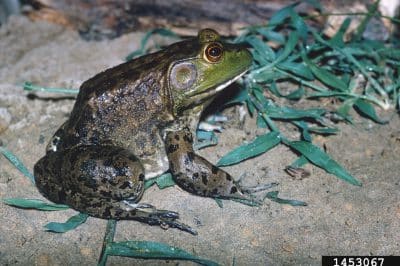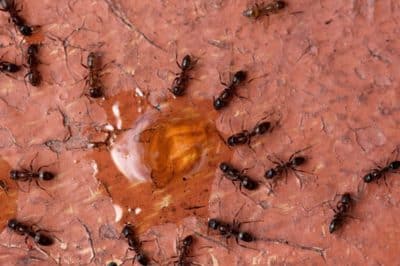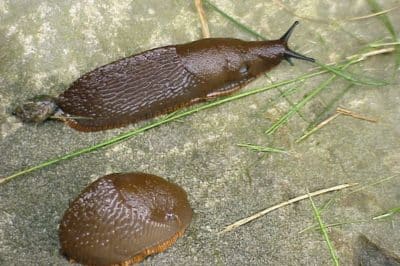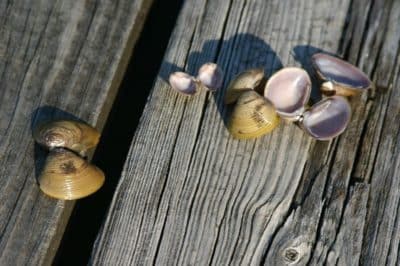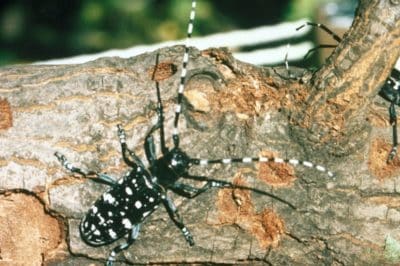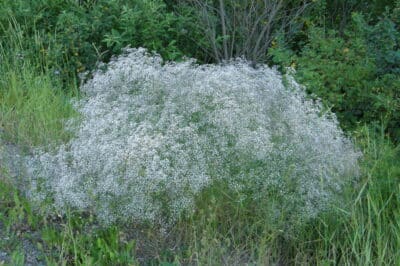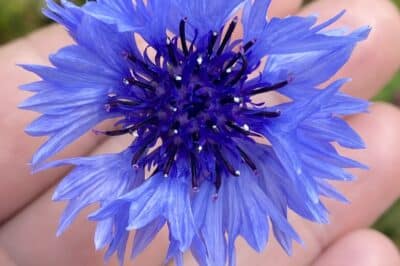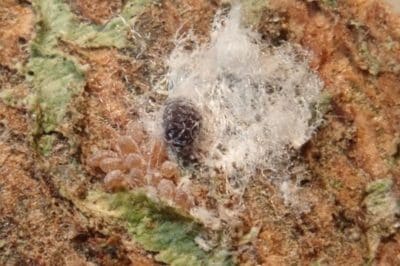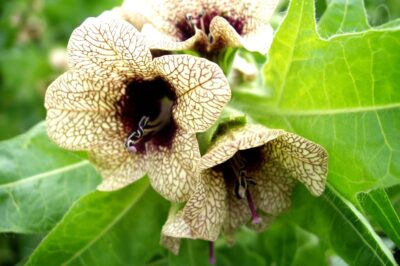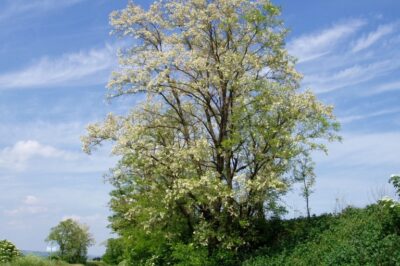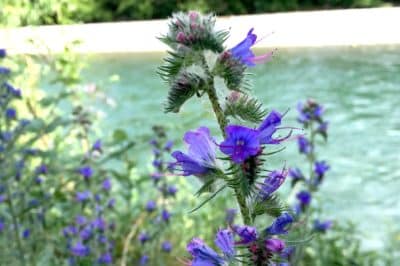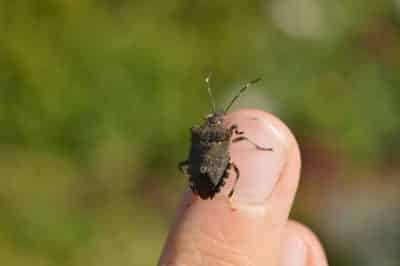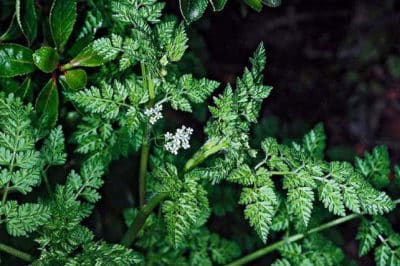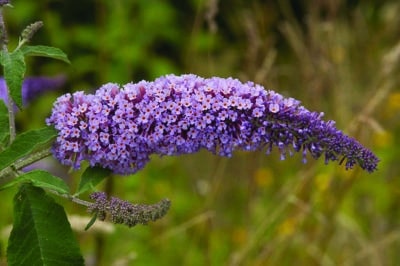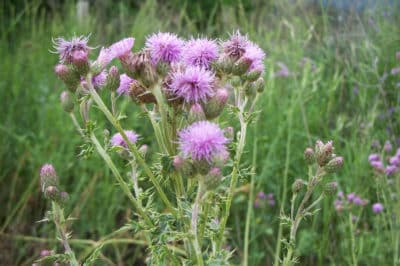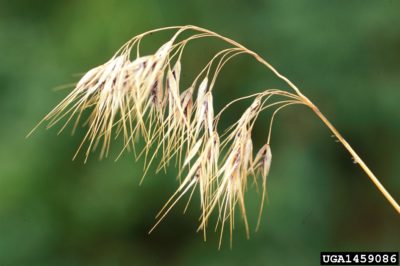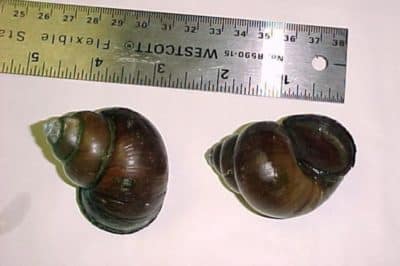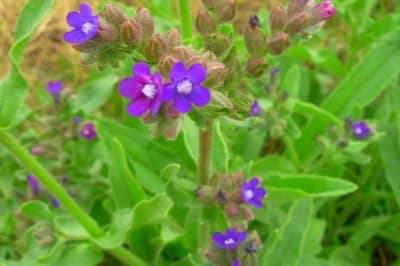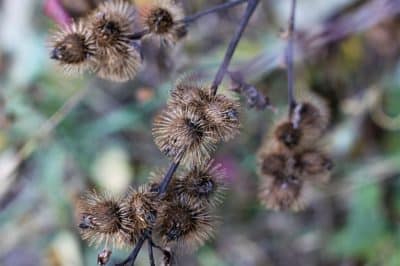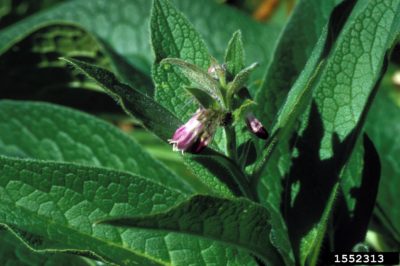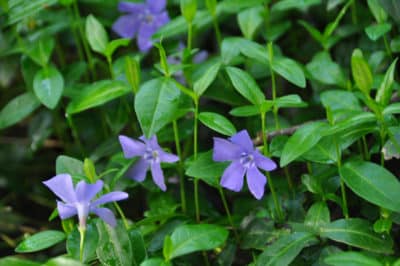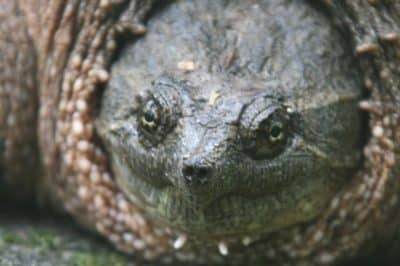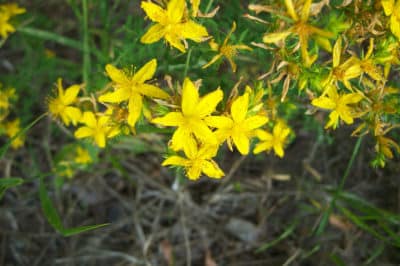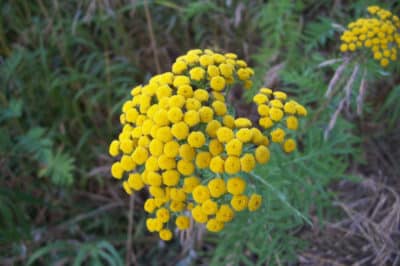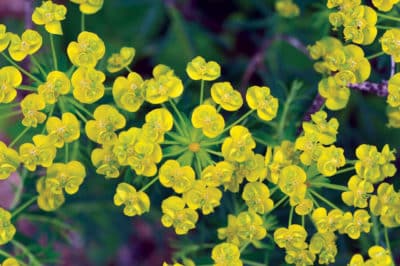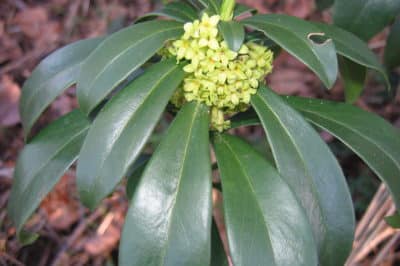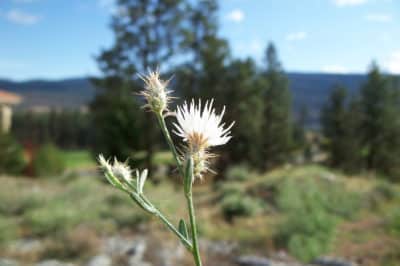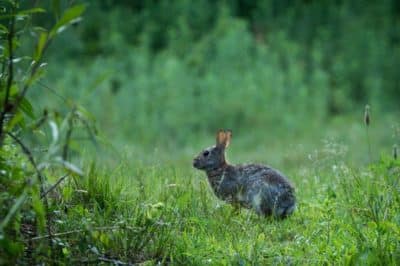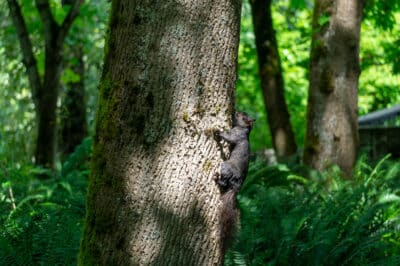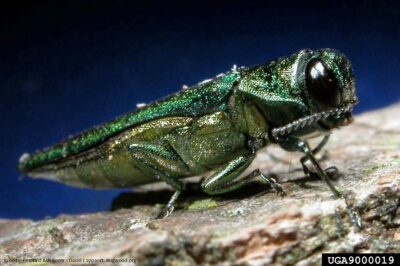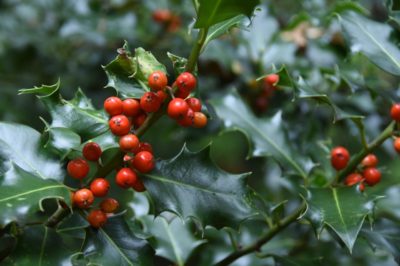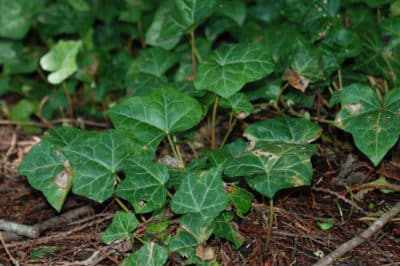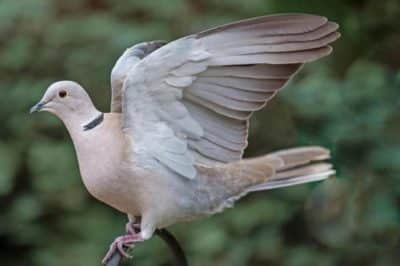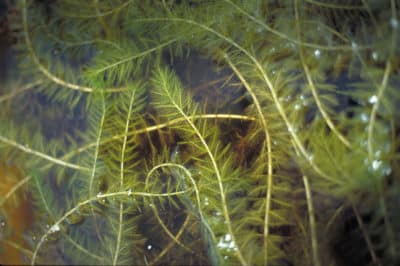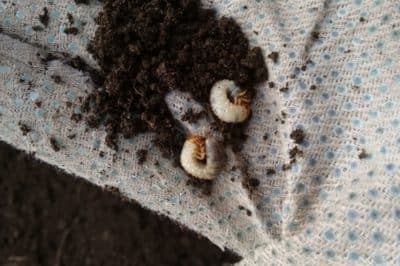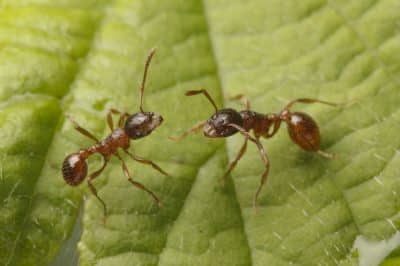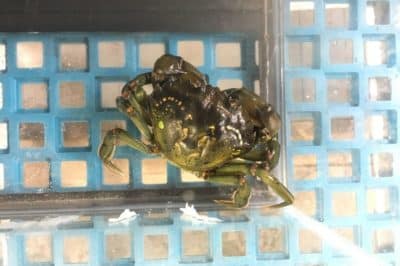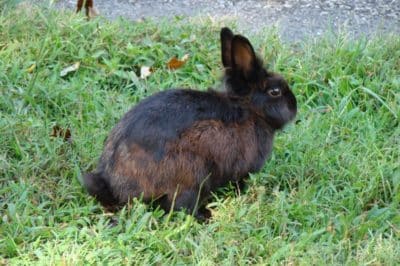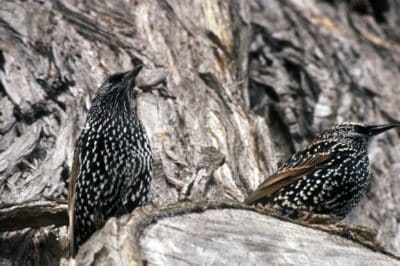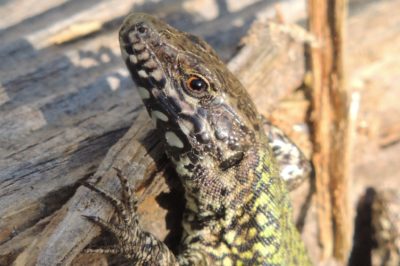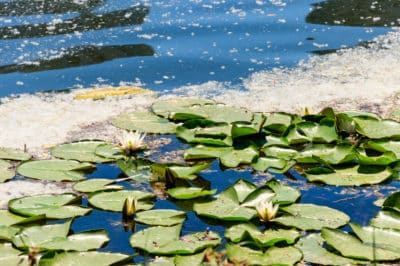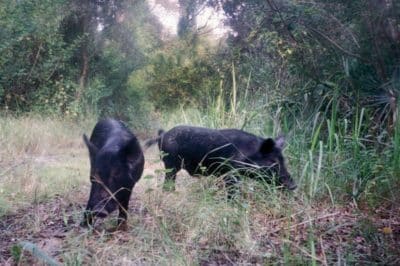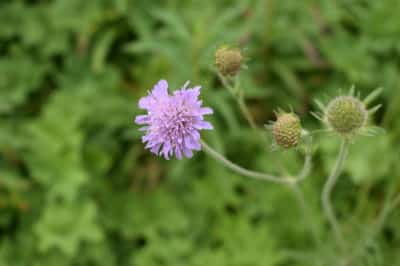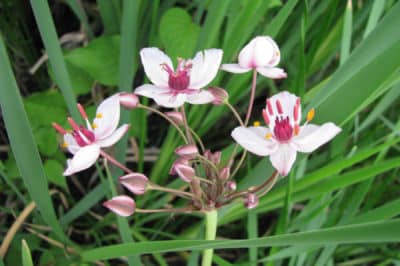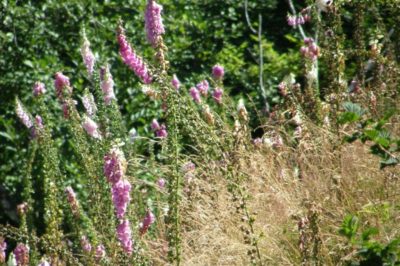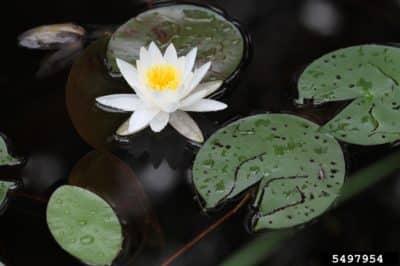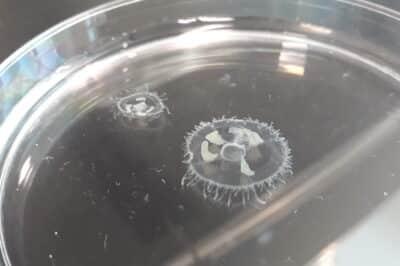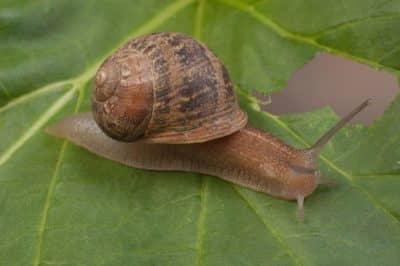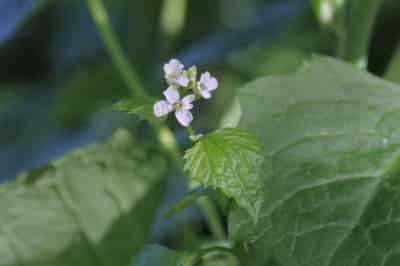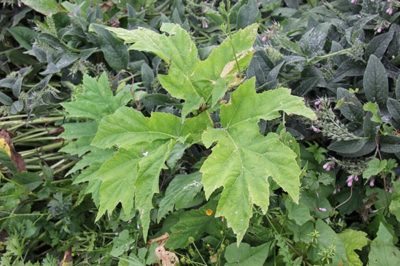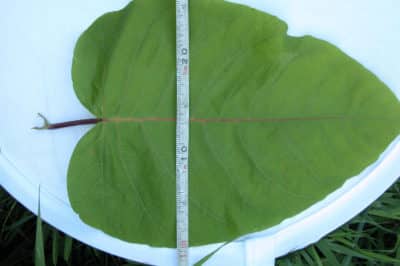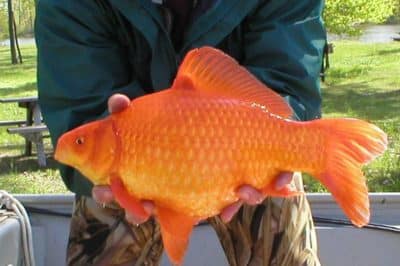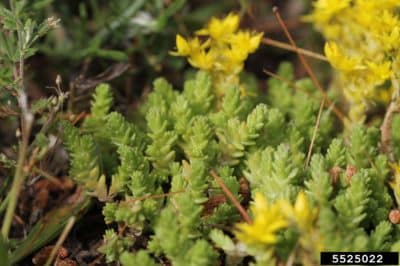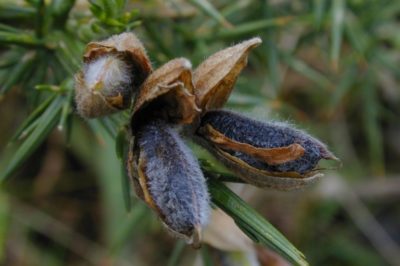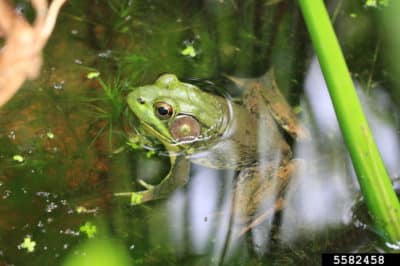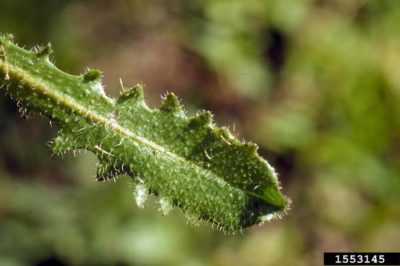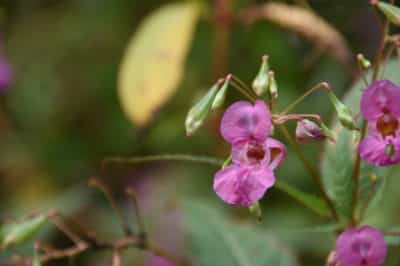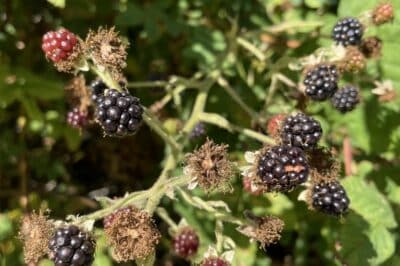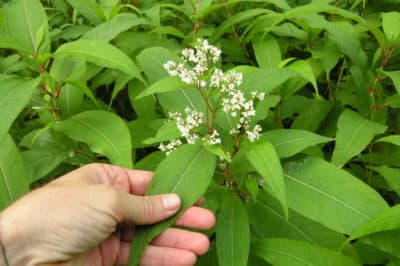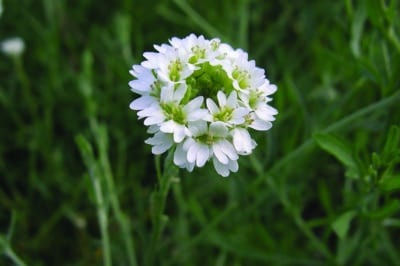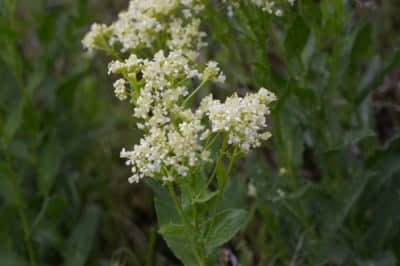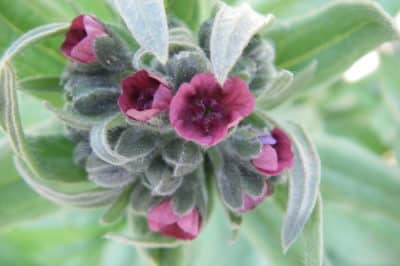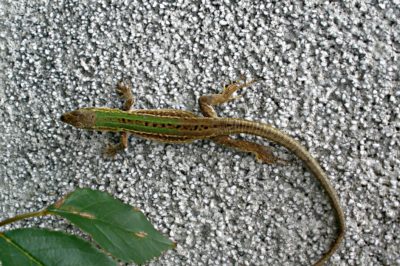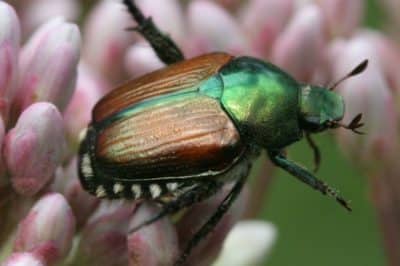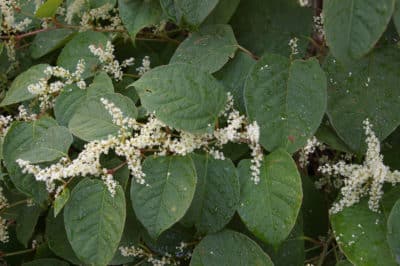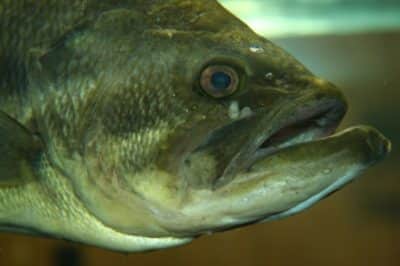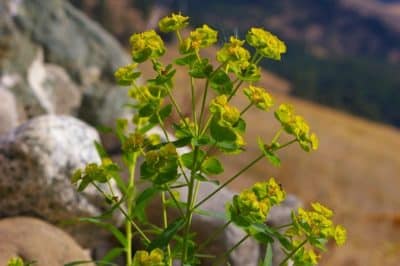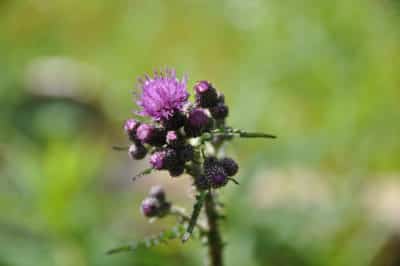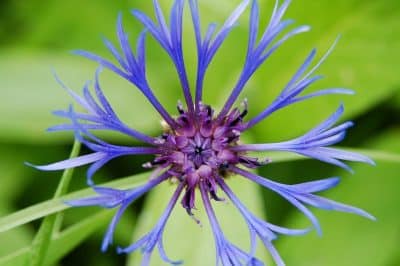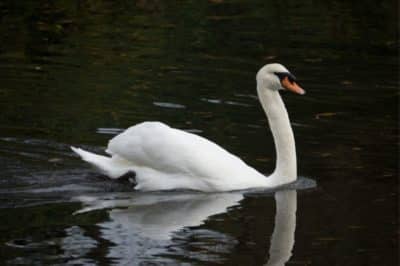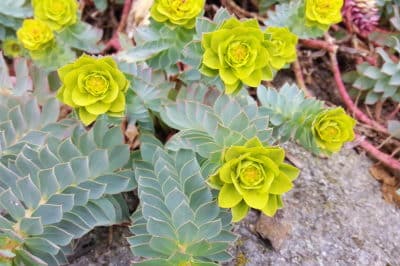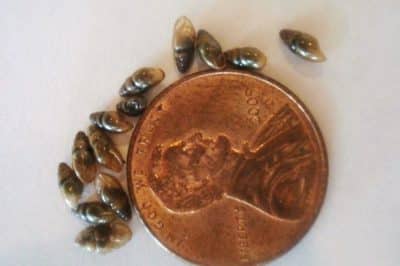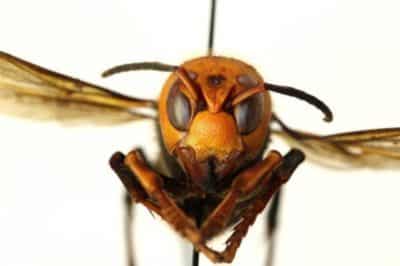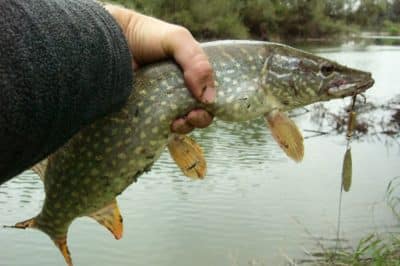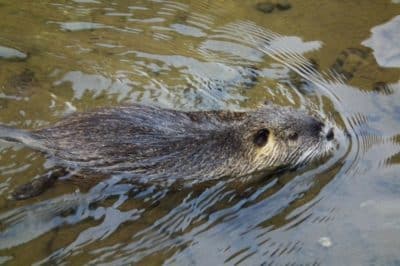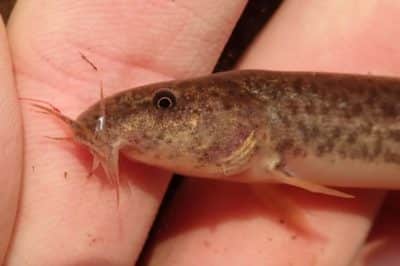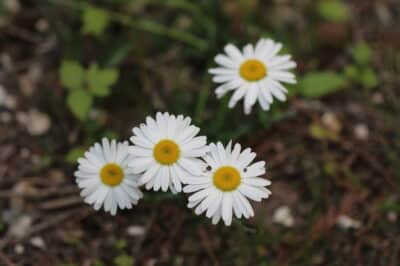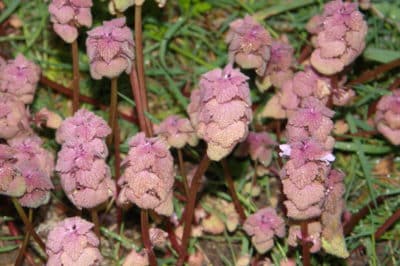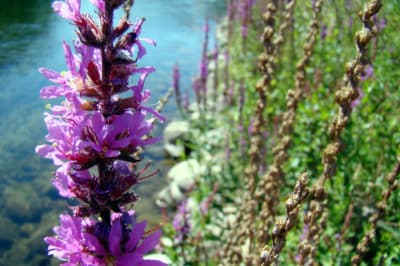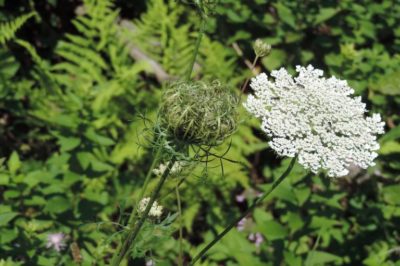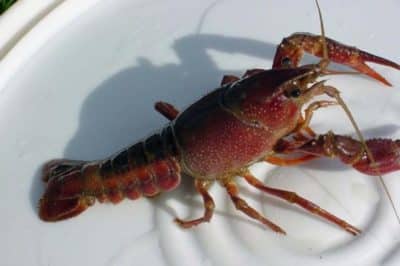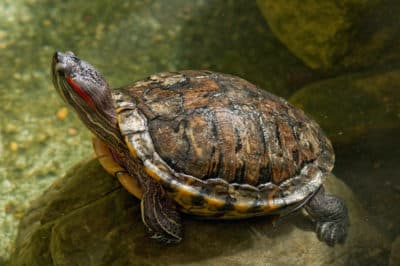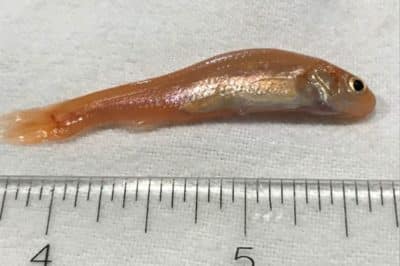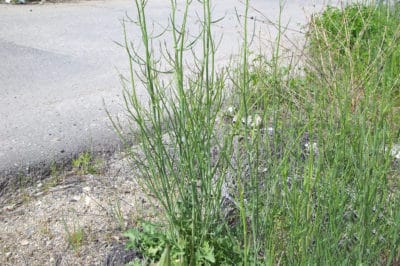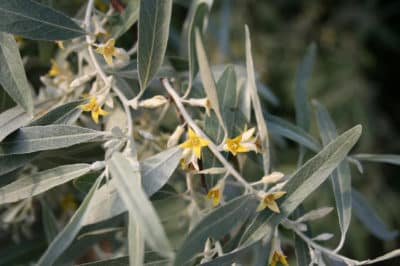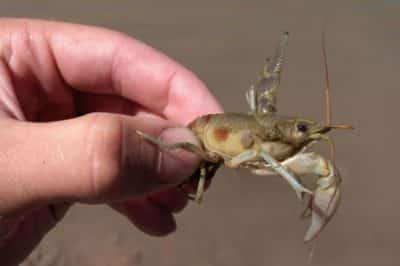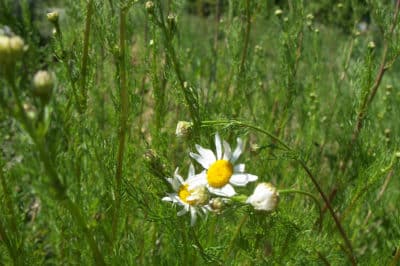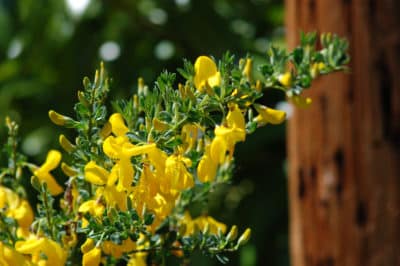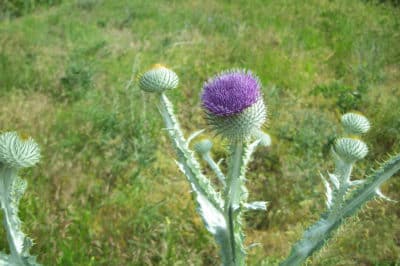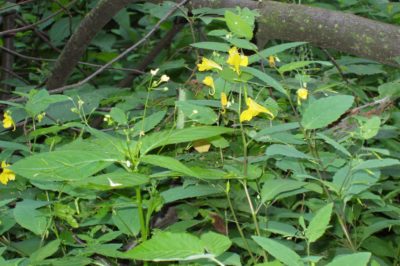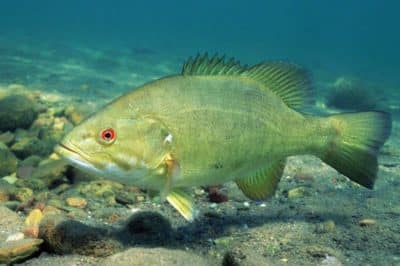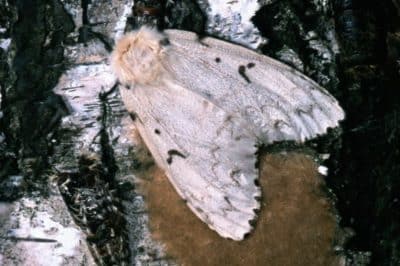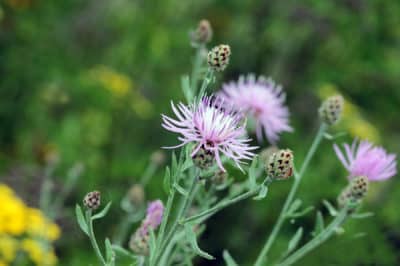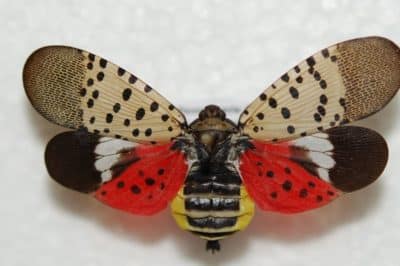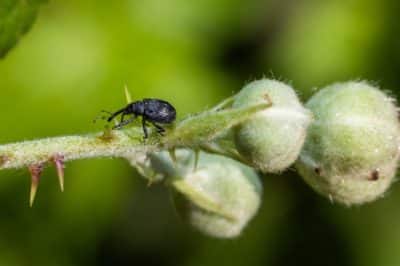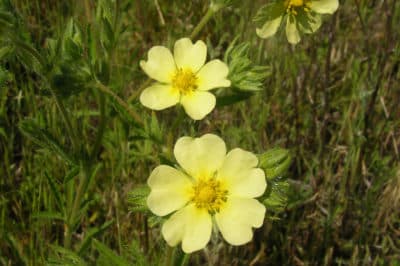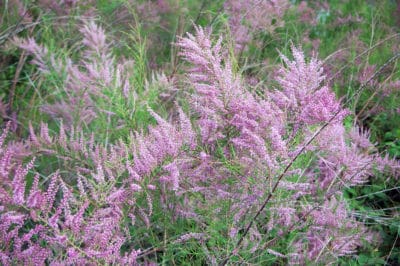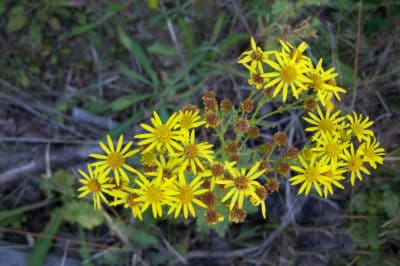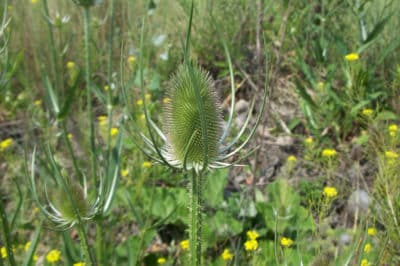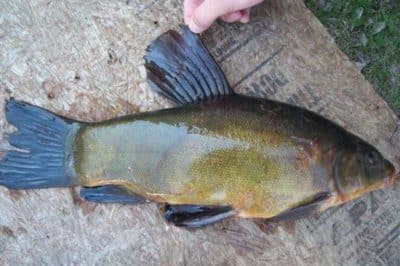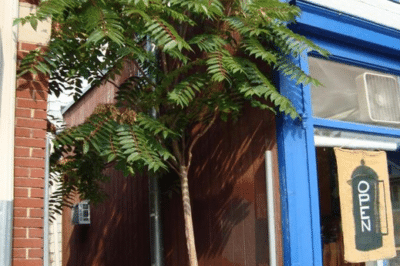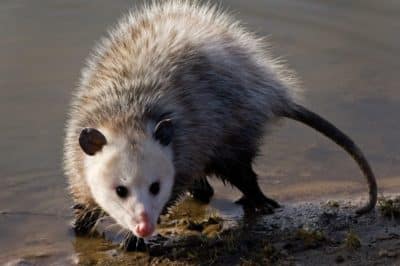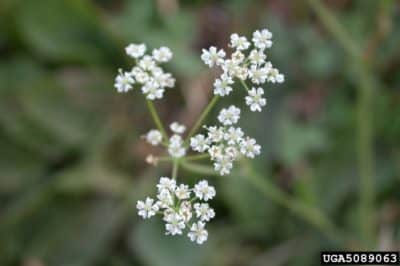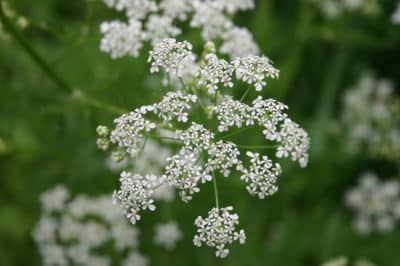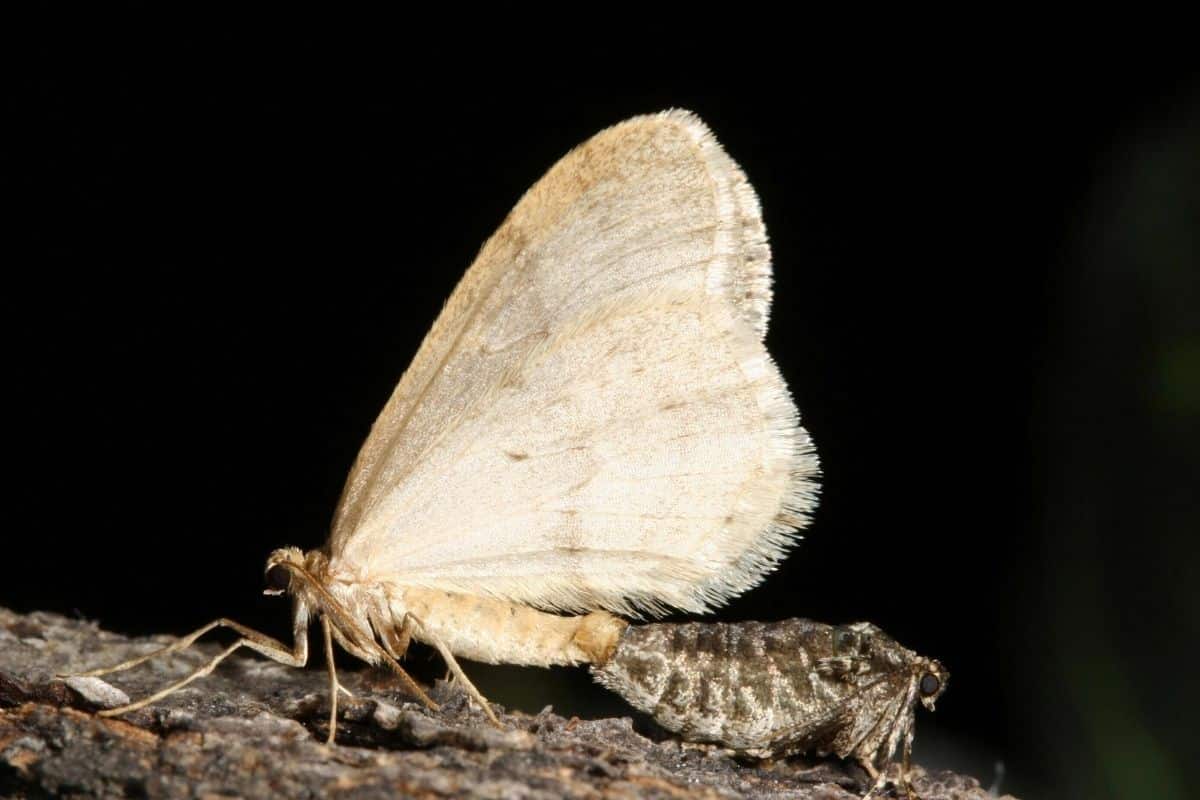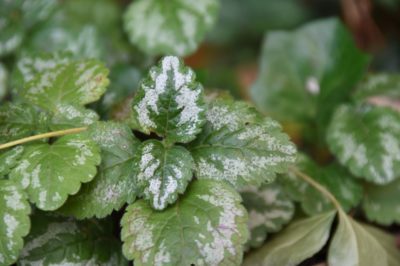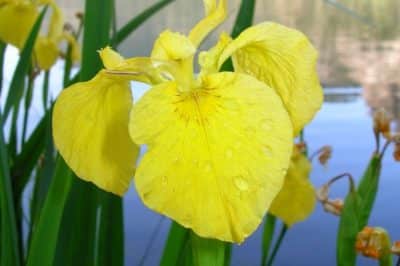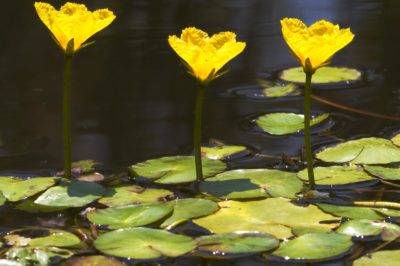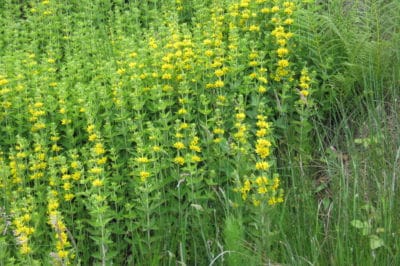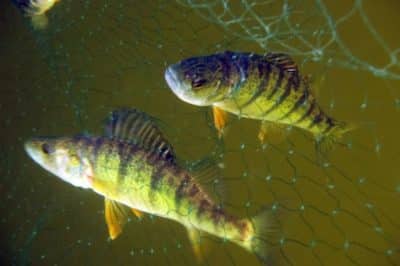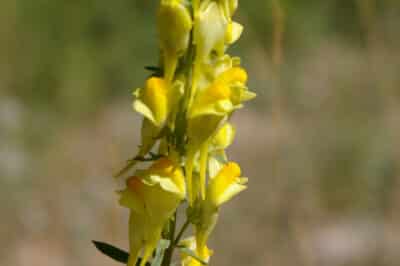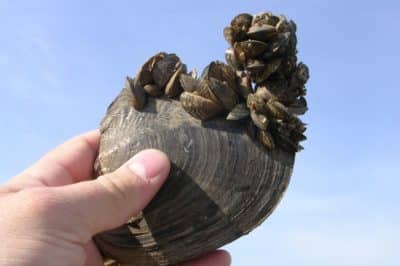Animals & Insects
Plants
Results for
Baby’s breath
Baby’s breath (Common gypsophila) is a slender, short bush with silvery, narrow leaves and lots of tiny, star shaped white flowers. It is an escaped ornamental plant that spreads primarily through seed, with each plant having the ability to spread over 10,000 seeds. When it invades grazing land, it reduces native grasses and forage for grazing animals and wildlife.
Bachelor’s buttons
Bachelor’s button (Cornflower) is a flowering plant that can be 1 m in height, with multiple bell-shaped blue, purple or pink marginal flower arranged around the flower head. This invasive plant produces large amounts of seed and can easily invade dry meadows, fields, and grasslands.
Black henbane
Black henbane can be an annual or biennial, growing up to one metre tall. The stems are upright, thick, and almost woody. The flowers are funnel-shaped with five lobes and brownish-yellow with dark purple veins. The leaves are large, up to 20 cm long and 15 cm wide, with shallowly lobed edges. They grow in an alternate pattern and are covered in fine, sticky hairs.
Black locust
Black locust trees grow 12 to 30 m tall with a trunk diameter of 30 to 60 cm. They tend to grow straight in forests but can grow curved in open areas.
Flowers are white, clustered in groups of 10 to 25, and each flower is 2 to 2.5 cm across. Flower clusters are 10 to 20 cm long.
Leaves are pinnately compound (single main stem with smaller leaflets along both sides), featuring 3 to 9 pairs of smooth-edged, oval leaflets, plus a terminal leaflet.
Seeds are smooth, flat, and dark brown, measuring 5 to 10 cm long.
Blueweed
Blueweed (Viper’s bugloss) is a plant that is hairy and painful to touch with bright blue flowers. It is toxic to horses and cattle and reduces forage quality in rangelands and pastures, resulting in economic losses. Plants can drop up to 2800 rough seeds that can be further spread by clinging onto animals or humans.
Bohemian knotweed
Bohemian knotweed is a hybrid between Japanese (Reynoutria japonica) and Giant knotweed (Reynoutria sachalinensis) and resembles both species. Knotweeds were introduced to British Columbia for use in gardens and landscaping due to their rapid growth and attractive appearance. There are now four species established in BC: Bohemian, Giant, Himalayan, and Japanese knotweed.
Bur chervil
Bur chervil (Bur parsley) is an herbaceous plant with fern-like leaves and small white flowers. It can be found in most growing conditions, particularly in moist areas such as ditches and fields. Bur chervil easily out-grows native vegetation. Each flower produces two bur-like seeds that have a pronounced peak and are covered in bristles that easily stick to humans and animals to spread.
Butterfly bush
Butterfly bush (Summer lilac, Orange eye) is a semi-evergreen shrub that grows up to 5 m tall with a long, showy spike of tiny, purple flowers. This attractive, fast-growing plant has escaped gardens and now rapidly spreads into disturbed, open areas and along coastal forest edges, roadsides, and especially on sunny stream edges and riverbanks where it replaces native plants. Butterflies are often attracted to its flowers.
Canada thistle
Canada thistle (Creeping thistle, California thistle, Cursed thistle) is a shiny green, spiny herbaceous plant of variable height with purple flowers. Plants form thick infestations through creeping rhizomatous roots that crowd out forage grasses in pastures and rangelands, reducing crop yields and production. Canada thistle is commonly found growing on roadsides, cultivated fields, pastures, logged forests, riverbanks, and other disturbed areas where it also out-grows native species.
Cheatgrass
Cheatgrass (Downy brome, Drooping brome) is an annual grass introduced to North America in the late 1800’s with hairy leaves and drooping spikelets. It can be found alongside roads or disturbed areas, or in sagebrush ecosystems where it can form dense stands and outcompete native grasses. It can dramatically alter wildfire regimes, as well as injure livestock and animals’ eyes and mouths by its sharp awns.
Common bugloss
Common bugloss (Alkanet) is a hairy, biennial plant of variable height with small, purple flowers. It invades disturbed, sunny areas such as roadsides, pastures, and hay fields, which reduces the yield of these crops. It spreads primarily through seed, but root fragments can propagate. Bugloss leaves include alkaloid compounds which are toxic if ingested by humans or livestock.
Common burdock
Common burdock (Lesser burdock, Louse-bur, Wild rhubarb) is a biennial plant that forms a basal rosette with large leaves it’s first year and a very tall flowering stem it’s second year. It’s known for its clinging burrs that attach and cling to wild and farm animals. This can cause health issues such as blindness to these animals and allows burdock to spread large distances from a single plant.
Common comfrey
Common comfrey is a fuzzy, herbaceous, perennial plant with white or purple flowers that grows to a height of 1 m. It primarily reproduces vegetatively and is notoriously difficult to remove due to its tendency to sprout whole plants from small root fragments. Its large taproot allows it to bioaccumulate nutrients in the soil and outcompete native plants.
Common periwinkle
Common periwinkle (Lesser periwinkle, Dwarf periwinkle) is a shiny evergreen trailing plant with showy purple flowers. It was a common ornamental groundcover popular for its fast growth and dense coverage. However, it has since escaped captivity and spread rapidly through BC forest’s understories, choking out native plant species.
Common St. John’s wort
Common St. John’s-Wort is a perennial plant that with dark green, opposite leaves and bright yellow, 5 petalled, clustered flowers. It grows in dense patches which can crowd out natural plants and reduce the grasses that animals feed on. St. John’s wort spreads by lateral roots and can produce up to 100,000 seeds per plant.
Common tansy
Common tansy (Bitter buttons, Cow bitter) is an herbaceous plant of variable height with fern-like leaves and yellow, flat-topped round flowers. It’s often found growing in sunny, disturbed areas such as roadsides or pastures where it can displace native vegetation. Infestations in rangeland can be toxic to livestock, and it’s reported that dairy cattle consuming the leaves often have unpleasant tasting milk.
Cypress spurge
Cypress spurge (Graveyard weed) is a short herbaceous plant with numerous yellow cup like flowers on stalks. It was originally grown as an ornamental but has since escaped into the wild. It prefers sun and can be found growing in open, disturbed sites like meadows, pastures, and roadsides. This plant and its sap are extremely toxic to humans and animals.
Toxic to humans, livestock and wildlife when consumed, or when its sap contacts skin. The sap causes nausea, vomiting and diarrhea when eaten. It can cause blindness if it gets in people’s eyes and skin contact causes redness, swelling and blisters.
Daphne (Spurge-Laurel)
Daphne (Spurge-Laurel) is a rhododendron-like plant with shiny green leaves and light yellow-green flowers. It is an escaped horticultural plant that can rapidly take over a range of ecosystems. It is especially suited to take over forest understories where it can form dense monocultures and outcompete native vegetations. It’s sap is mildly toxic to humans and animals.
Diffuse knapweed
Diffuse knapweed (White knapweed, Tumble knapweed) is a short flowering plant with white flowers, slender stems and leaves. It is often found growing in open areas and well-drained soils where they establish in grasslands, open forests, and along roadsides. They choke out desirable forage for livestock and wildlife and increase soil erosion. Seeds can be spread by wind, livestock, and people.
English holly
English holly (European holly, Common holly) is a plant with dark green, spiny evergreen leaves and shiny red berries that can grow as a large tree, shrub, or creeping vine. It’s an extremely adaptable invasive species capable of growing in shade or sun. Its berries are preferred by birds, allowing it to spread in unpredictable patterns.
English ivy
English ivy (European ivy, Common ivy) is a creeping evergreen vine that can grow as dense groundcover or while climbing up trees. It was commonly planted to provide quick cover for walls and buildings, and as ground cover in commercial landscape. It spreads throughout rainforest understories where it suppresses native biodiversity.
Eurasian watermilfoil
Eurasian watermilfoil (Spiked watermilfoil) is an aquatic plant with long slender stems, and thin feathery leaves. It has likely been let loose from aquariums. It can quickly take over waterways, causing sluggish water that attracts mosquitos and reduces the recreational potential of the waterway such as swimming and boating.
European waterlily
European waterlily (European white waterlily) is an aquatic plant with floating glossy green ‘lily pads’ on the water’s surface and large white flowers. It can be found in slow-moving water such as in lakes and ponds. This plant creates a swimming and recreational hazard by overtaking aquatic environments and choking out native species.
Field scabious
Field scabious is a short perennial plant with large violet to pink clover-like flowers. It can found growing along roadside or in pastures. It crowds out forage and pasture plants, reducing food availability for grazing animals. A single plant can produce up to 2,000 seeds, which makes this plant difficult to remove once established.
Flowering rush
Flowering rush (Grass rush) is an aquatic perennial with green, grass-like foliage and pink almond-scented flowers. It can be difficult to identify as it resembles several native species but will quickly crowds out other plants. It can be found in freshwater marshes, lakes or streams and reproduces primarily through its rhizomes.
Foxglove
Foxglove (Purple foxglove) is a tall flowering plant mimicking a column of bell-shaped flowers. It’s an extremely abundant exotic species that has naturalized throughout the province, leading many to believe this plant is a BC native! Found growing along roadsides, waste areas, and forests, a single foxglove specimen can produce 5,000 seeds each season. Every part of this plant (including the seeds) is extremely poisonous.
Fragrant waterlily
Fragrant waterlily (American white waterlily, Beaver root) is an aquatic perennial plant with round glossy green leaves that float on the water’s surface. This popular, fragrant aquatic perennial is still sold in garden and pond centers throughout the province despite its potential to invade and destroy our sensitive aquatic ecosystems.
Garlic mustard
Garlic mustard is a biennial plant with triangular, toothed leaves and small white flowers. In can be found growing in disturbed ecosystems, or in forest understories as it is a shade-tolerant plant. It reproduces by seed only and is unpalatable for herbivore grazers.
Giant hogweed
Giant hogweed (Giant cow parsnip, Cartwheel flower) is an extremely toxic invasive plant that is unusually large with deeply incised and sharp toothed leaves. Its sap will cause burns, blisters and scars when touched by bare skin. It can be found in moist disturbed soils, or riparian areas such as streams. It can grow very quickly and dominate ravines and stream banks posing serious negative risks to human health and ecology.
Giant knotweed
Giant knotweed is the largest of the knotweed species found in BC, with leaves that can be 16-20 cm wide and 30 cm in length. Knotweeds are frequently found in riparian areas, derelict land, road and railway right of ways and gardens. They thrive in moist soil and full or partial sun. Knotweeds can spread by seed, root fragments, and stem fragments, making them very difficult to control.
Goldmoss stonecrop
Goldmoss stonecrop (Biting stonecrop) is a rapidly growing succulent that was popular for rock and xeriscape gardens and is also occasionally used as a green roof species for its ability to withstand extreme temperatures and drought. However, this species is quite aggressively growing and overtakes other plants, rapidly spreading by both seed and vegetatively. A single leaf can root and turn into a whole new plant.
Gorse
Gorse (Furze, Whin) is a spiny, perennial evergreen shrub. A mature plant can disperse up to 18,000 seeds per plant, and their seeds are easily distributed by human, environmental, and animal transport. Gorse poses a fire hazard due to its volatile oils. It is considered a noxious weed throughout the province.
Hairy cat’s-ear
Hairy cat’s-ear (Common cat’s ear, False dandelion) is a short, yellow flowered perennial herbaceous plant that invades pastures, meadows, roadsides, riverbanks, lawns, and disturbed sites. This plant can grow in a wide range of conditions, but thrives the most in sunny, open areas. It displaces native plants and is a nuisance weed on lawns.
Himalayan balsam (Policeman’s helmet)
Himalayan balsam (Policeman’s helmet, Ornamental jewelweed) is a short herbaceous plant with hooded white, pink or purple flowers. This plant will take over areas with moist soils, including stream and riverbanks. It has seed pods that when ripe, can explode or shoot seeds up to 7 m from the plant.
Himalayan blackberry
Himalayan blackberry (Armenian blackberry) is a large, thorny plant that grows from thick canes with small white flowers and producing large, shiny blackberries. It easily invades disturbed sites, pastures, roadsides, streambanks, and forest edges where it can create dense thorny thickets and crowd out low-growing vegetation. These thickets can produce 7,000–13,000 seeds per square metre.
Himalayan knotweed
Note: Both BC Priority Invasive Species List and iNaturalist have scientific name of Persicaria wallichii. Noxious weed list uses Polygonum polystachyum.
Knotweeds were introduced to British Columbia for use in gardens and landscaping due to their rapid growth and attractive appearance There are now four species established in BC: Bohemian, Giant, Himalayan, and Japanese knotweed. Knotweeds grow aggressively and are very hard to kill.
Hoary alyssum
Hoary alyssum (False hoary madwort, Hoary berteroa) is a flowering plant with clusters of small white flowers with deeply notched petals. It spreads quickly through a long season of seed production. Seeds are dispersed by vehicles, equipment, footwear, wildlife, and birds.
Hoary cress
Hoary cress (Heart-podded hoary cress, White top) is a perennial plant with numerous small, white flowers with 4 petals each. It invades open, sunny areas such as hayfields, meadows, and roadsides. It spreads by roots and seeds and crowds out native vegetation. It is considered a noxious weed in parts of BC.
Hound’s tongue
Hound’s tongue (Houndstooth, Dog’s tongue) is an invasive plant with large dog’s tongue shaped leaves and red-purple, coiled flowers. It grows on dry, well-drained sites. Each plant can produce 2,000 -4,000 barbed seeds a year that cling to clothing, livestock, and wildlife.
Japanese knotweed
Knotweeds were introduced to British Columbia for use in gardens and landscaping due to their rapid growth and attractive appearance. There are now four species established in BC: Bohemian, Giant, Himalayan, and Japanese knotweed.
Leafy spurge
Leafy spurge (Green spurge) is a perennial plant with green-yellow flowers in a flat-topped umbrella shaped. It is a garden plant that has escaped into natural areas and can now be found on dry roadsides, fields, grasslands, open forests, and disturbed sites. It can spread rapidly by its large root system, growing 9 metres down into the soil.
Marsh plume thistle
Marsh plume thistle (Marsh thistle, European swamp thistle) is a biennial plant with purple flowers, and spiny, hairy leaves. It prefers moist to wet, naturally open or disturbed areas. Seeds are spread by wind, water, birds, vehicles, and equipment.
Mountain bluet
Mountain bluet (Perennial cornflower, Montane knapweed) is a perennial plant with large, bright blue, ray-like flowers and long, lance shaped leaves. It is an escaped garden plant that invades natural areas. This plant can self-seed, which makes it difficult to control.
Myrtle spurge
Myrtle spurge (Donkey tail, Blue spurge) is a short, creeping escaped garden perennial with oval, spiraling blue green stems and yellow-green flowers. It likes dry, disturbed soils where it grows quickly and aggressively, releasing chemicals from its roots which stop other plants from growing near it.
Orange hawkweed
Orange hawkweed (Orange hawk bit, Fox-and-cubs) is a short flowering plant that can grow from 30–60 cm in height with bright orange-red flowers clustered on top. It can create dense mats that crowd out native plants. Hawkweeds spread quickly through above ground runners, horizontal roots, and seeds.
Oxeye daisy
Oxeye daisy (Dog daisy, Marguerite) is an herbaceous plant of variable height with typical white daisy-like flowers with a yellow centre and wavy leaves. It was first introduced to North America in seed mixes. It is still commonly sold in many store-bought wildflower mixes and remains popular among gardeners despite its negative impacts.
Scentless chamomile (Matricaria maritima) is a similar species; however its leaves are fern-like, and it has smaller flowerheads.
Purple deadnettle
Purple deadnettle (Red deadnettle, Purple archangel) is a short herbaceous plant with small pink flowers, square stems and hairy leaves. It lives as an annual or biennial. A single plant can produce thousands of seeds which remain viable in the soil for several years. It can also spread via stem and root fragments.
Purple loosestrife
Purple loosestrife (Spike loosestrife, Purple lythrum) is a perennial shrub-like plant with a showy spike of, purple-pink flowers and narrow, stalkless leaves. It spreads rapidly by seed and root fragments. The tiny seeds are dispersed by wind, mud, moving water, wildlife and humans.
Queen Anne’s lace
Queen Annes’ lace (Wild carrot) is an herbaceous plant with an umbrella-shaped cluster of white flowers, hairy stem and finely dissected, hairy, fern like leaves. It is common to roadsides and other disturbed areas. This biennial plant persists in clay soils and can be a threat to recovering grasslands.
Rush skeletonweed
Rush skeletonweed (Gum succory, Devil’s grass, Nakedweed) is a perennial plant with numerous wiry, branched stems, extremely narrow leaves and small yellow flowers. It invades rangelands, roadsides and disturbed areas. It competes with other plants for soil moisture and nutrients.
Russian olive
Russian olive (Silver berry, Oleaster) is a short invasive tree with silver leaves, black bark and small, yellow flowers. It can survive in dry conditions, cold temperatures and poor soils. It drinks more water than most plants in dry soil settings, therefore it can outgrow and compete with native species.
Scentless chamomile
Scentless chamomile (Scentless mayweed, Wild chamomile) is a plant of variable height with daisy-like flowers of white petals and yellow centres as well as thin, carrot like leaves. It can produce up to 1,000,000 seeds every year, and the seeds can survive in the soil for up to 15 years. It prefers moist soil conditions and can aggressively take over pastures, grasslands, and other agricultural areas.
Scotch broom
Scotch broom (English broom) is a woody shrub with bright yellow flowers, and small three leaflet leaves. It easily invades sunny, disturbed sites such as rangelands, roadsides, and areas of recent logging. Scotch broom can increase the intensity of wildfires, obstruct sightlines along roads, and crowd out native plants that animals depend on.
Scotch thistle
Scotch thistle (Cotton thistle) is a biennial or perennial plant with grey-green, woolly, lobbed leaves and spiney stems. It reproduces through thousands of seeds that can survive in the soil for over 30 years. Seeds can spread with the wind, but also in hay and water, and by attaching to clothing or animal fur.
Smallflower touch-me-not
Smallflower touch-me-not (Small balsam) is a twiggy, branching, fine-textured annual species with pale yellow flowers and serrated, glossy leaves. It is often found growing in moist soils such as those around rivers, streams, and wetlands ecosystems. Although this species prefers moist soils, it is tolerant to a range of sun exposures, soil types, and climates, making it difficult to eradicate.
Spotted knapweed
Spotted knapweed (Panicled knapweed) is a biennial, herbaceous plant with several small, purple flowers with long, thin petals branching from the stem. It is a prolific seed producer, with individual plants producing up to 140,000 seeds per square metre. Seeds and plant fragments make their way into hay and the undercarriages of vehicles, allowing for new infestations over great distances.
Sulphur cinquefoil
Sulphur cinquefoil (Rough-fruited cinquefoil) is a long-lived perennial with a 5 petal, pale yellow flowers and a palm-like hairy leaf. It invades grasslands, dry open forests, and disturbed sites such as roadsides and rangelands. A single plant can produce up to 1,600 seeds, living up to 20 years as new shoots can emerge from the main root.
Tamarisk
Tamarisk (salt cedar) is a shrub-like tree with light green, scale-like leaves and light pink flowers. Its other known common name of ‘salt cedar’ comes from its ability to release salt from its leaves, which prevents the growth of any native vegetation within its range.
Tansy ragwort
Tansy ragwort (Common ragwort, Stinking willie, Staggerwort) is a biennial to short-lived perennial with dense clusters of bright yellow flowers and ruffled, dark green leaves. It grows in pasturelands and disturbed areas. Seeds are easily transported by wind, soils, human activity, and livestock.
Teasel
Teasel (Wild teasel) is a biennial plant with spiny, cone-shaped seed heads, small pink flowers and long thin leaves. It prefers sunny locations and can grow in a range of wet to dry soils. Spreading through seed dispersal, it typically invades meadows, pastures, roadsides, and disturbed areas.
Tree of heaven
Tree of heaven (Ailanthus, Varnish tree) is a deciduous tree that can reach 20-30m in height, with small white flowers and oval shaped leaflets. It became popular in BC with gardeners for its rapid growth and interesting foliage. It produces by seed and by division and can sprout nearly anywhere, making it very difficult to eradicate!
Wild caraway
Wild caraway (Meridian fennel, Persian cumin) is an herbaceous plant of variable height with fern-like leaves and white groups of lowers. It was introduced to Canada as a spice crop but has escaped cultivation. It is a biennial plant that can quickly outgrow native plants. It can grow in light shade, survive light frost and extra moisture in the soil.
Wild chervil
Wild chervil (Cow parsley, Wild beaked parsley) is a biennial to short-lived perennial with small white flowers in umbrella like clusters and fern like leaves. It is typically found along roadsides, fence lines, streambanks, in ditches and competing with pasture and hay crops. It has a thick taproot that spreads aggressively, as deep as 2 m into the soil, and is very difficult to remove.
Yellow archangel
Yellow archangel (Artillery plant, Aluminium plant, Yellow weasel-snout) is a perennial plant with small yellow flowers on the leaf axils, and opposite hairy, round-toothed leaves. This plant prefers shady sites such as forested areas and grows in a dense mat that smothers other native plants. It spreads by seed and plant fragments, and by animals and humans passing through the vegetation.
Yellow flag iris
Yellow flag iris (Water flag) is a perennial aquatic plant with bright yellow flowers on tall, smooth stems. It invades ditches, wetlands, streams, lake shorelines, and shallow ponds. This plant reproduces through seed dispersal and horizontal roots, and each rhizome fragment can sprout into a new plant, making it a difficult invasive species to control.
Yellow floating heart
Yellow floating heart (Water fringe, Fringed water lily, Entire marshwort) is an aquatic perennial that resembles a water lily with its round, glossy leaves that float on the water’s surface and yellow flowers attached to sturdy, upright stems. It will form thick mats of vegetation in a sensitive aquatic ecosystem. It spreads both by seed and vegetatively, making this species extremely difficult to control.
Yellow loosestrife
Yellow loosestrife is a tall, fast-spreading perennial plant with yellow flowers. It prefers to grow in wet soils and is typically found in wetlands, wet roadsides, ditches, and along shorelines. It can form dense clumps that spread out over large areas, crowding out native plants.
Yellow toadflax
Yellow toadflax (Common toadflax, Butter-and-eggs) is a creeping plant with light yellow flowers and long, slim green leaves. It is typically found in cultivated fields, pastures, along roadsides and other disturbed areas. Yellow toadflax can out-compete native plants, which negatively affects plant crops, and reduces grass growing in pastures and rangelands.



